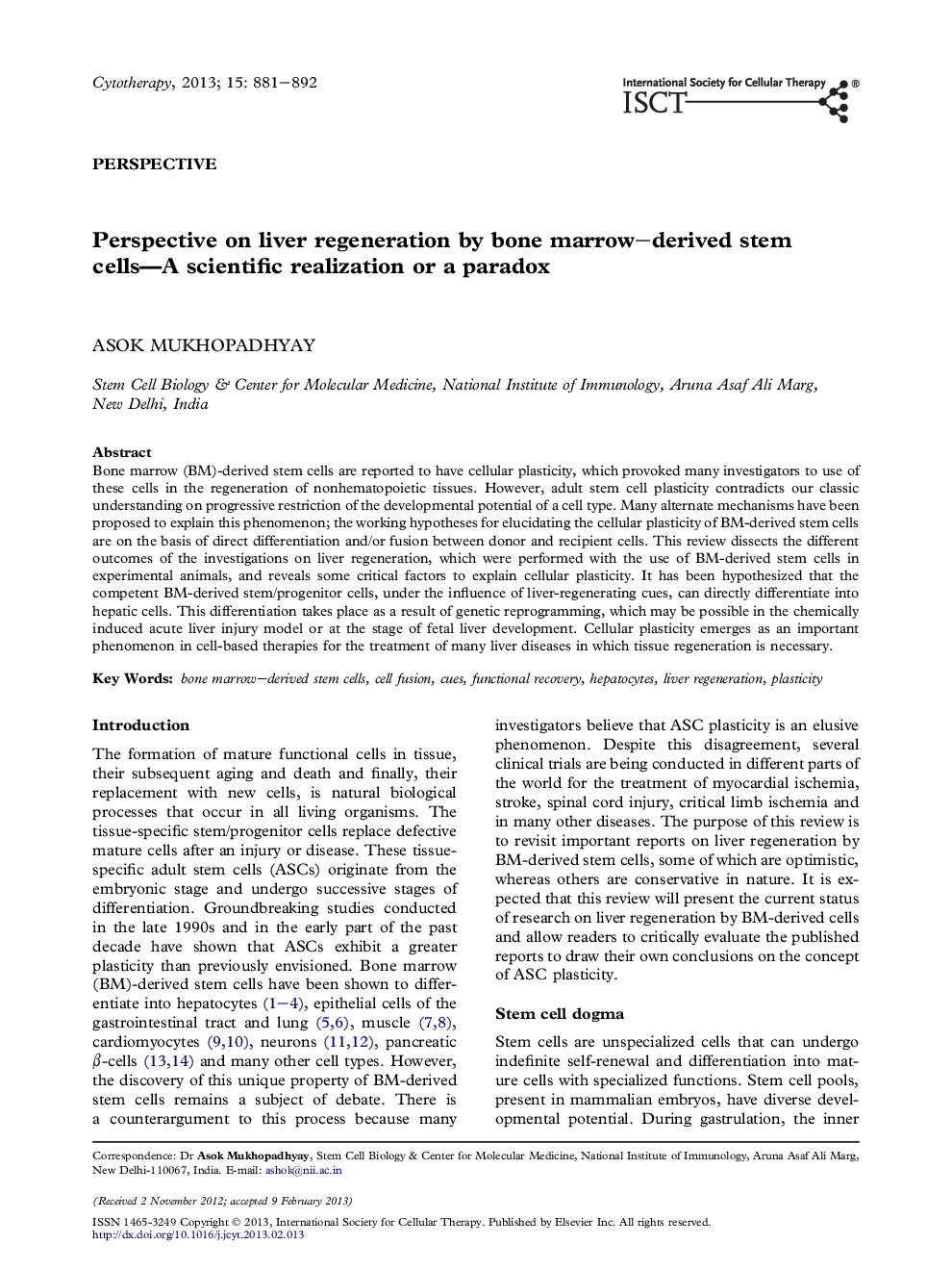| Article ID | Journal | Published Year | Pages | File Type |
|---|---|---|---|---|
| 2171277 | Cytotherapy | 2013 | 12 Pages |
Bone marrow (BM)-derived stem cells are reported to have cellular plasticity, which provoked many investigators to use of these cells in the regeneration of nonhematopoietic tissues. However, adult stem cell plasticity contradicts our classic understanding on progressive restriction of the developmental potential of a cell type. Many alternate mechanisms have been proposed to explain this phenomenon; the working hypotheses for elucidating the cellular plasticity of BM-derived stem cells are on the basis of direct differentiation and/or fusion between donor and recipient cells. This review dissects the different outcomes of the investigations on liver regeneration, which were performed with the use of BM-derived stem cells in experimental animals, and reveals some critical factors to explain cellular plasticity. It has been hypothesized that the competent BM-derived stem/progenitor cells, under the influence of liver-regenerating cues, can directly differentiate into hepatic cells. This differentiation takes place as a result of genetic reprogramming, which may be possible in the chemically induced acute liver injury model or at the stage of fetal liver development. Cellular plasticity emerges as an important phenomenon in cell-based therapies for the treatment of many liver diseases in which tissue regeneration is necessary.
